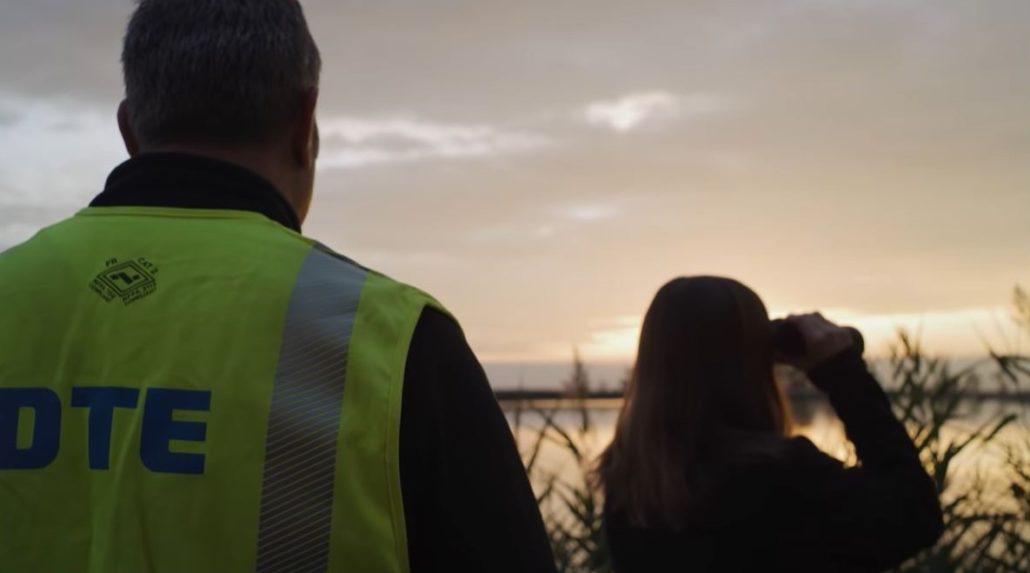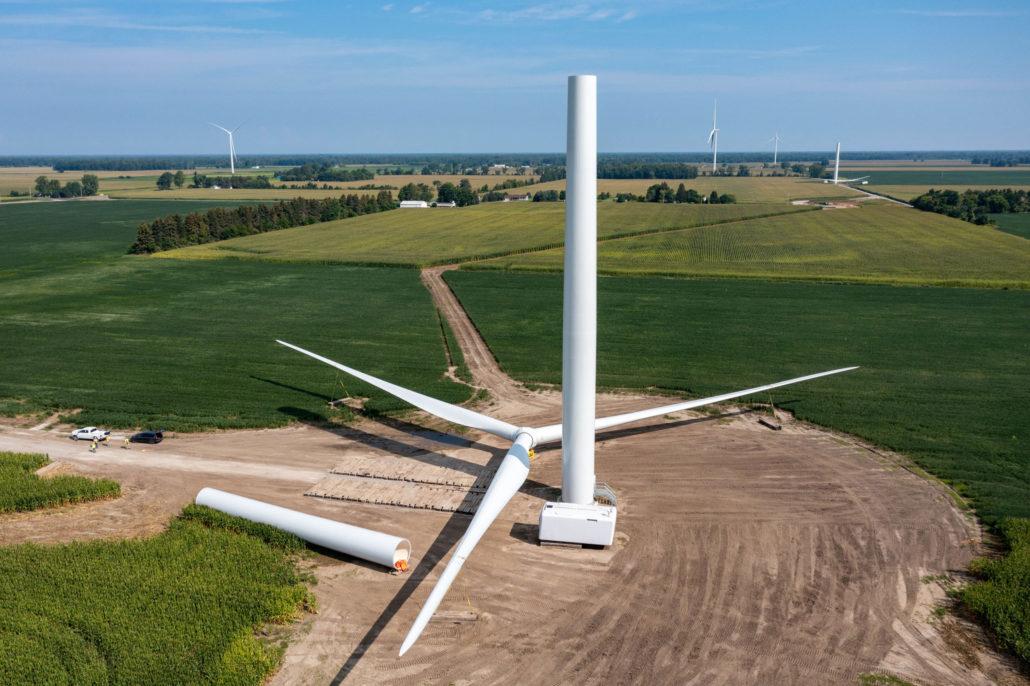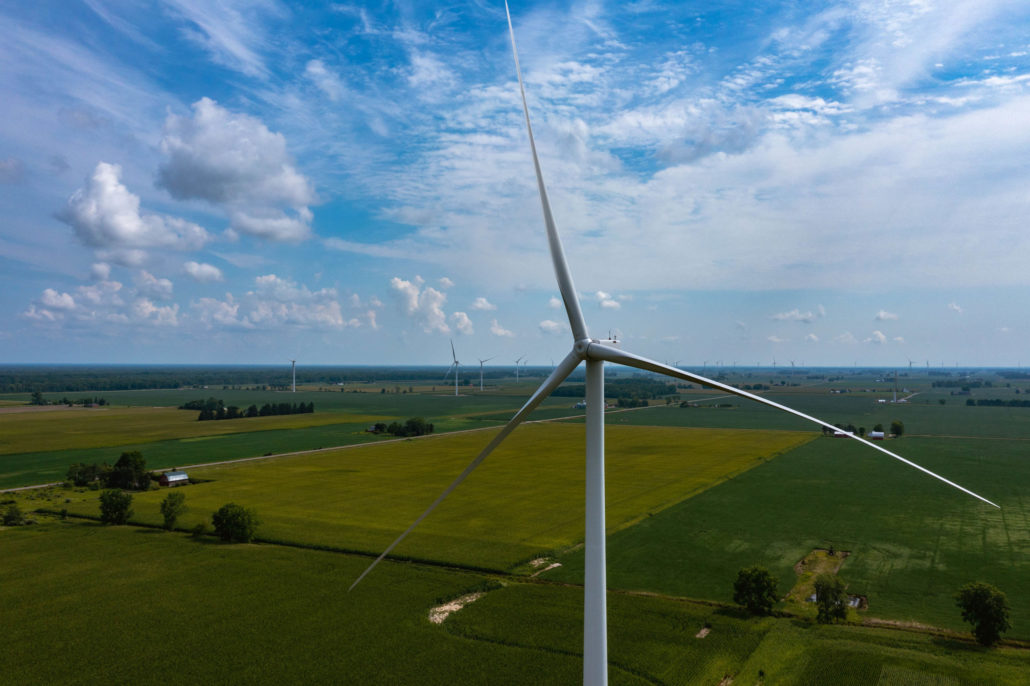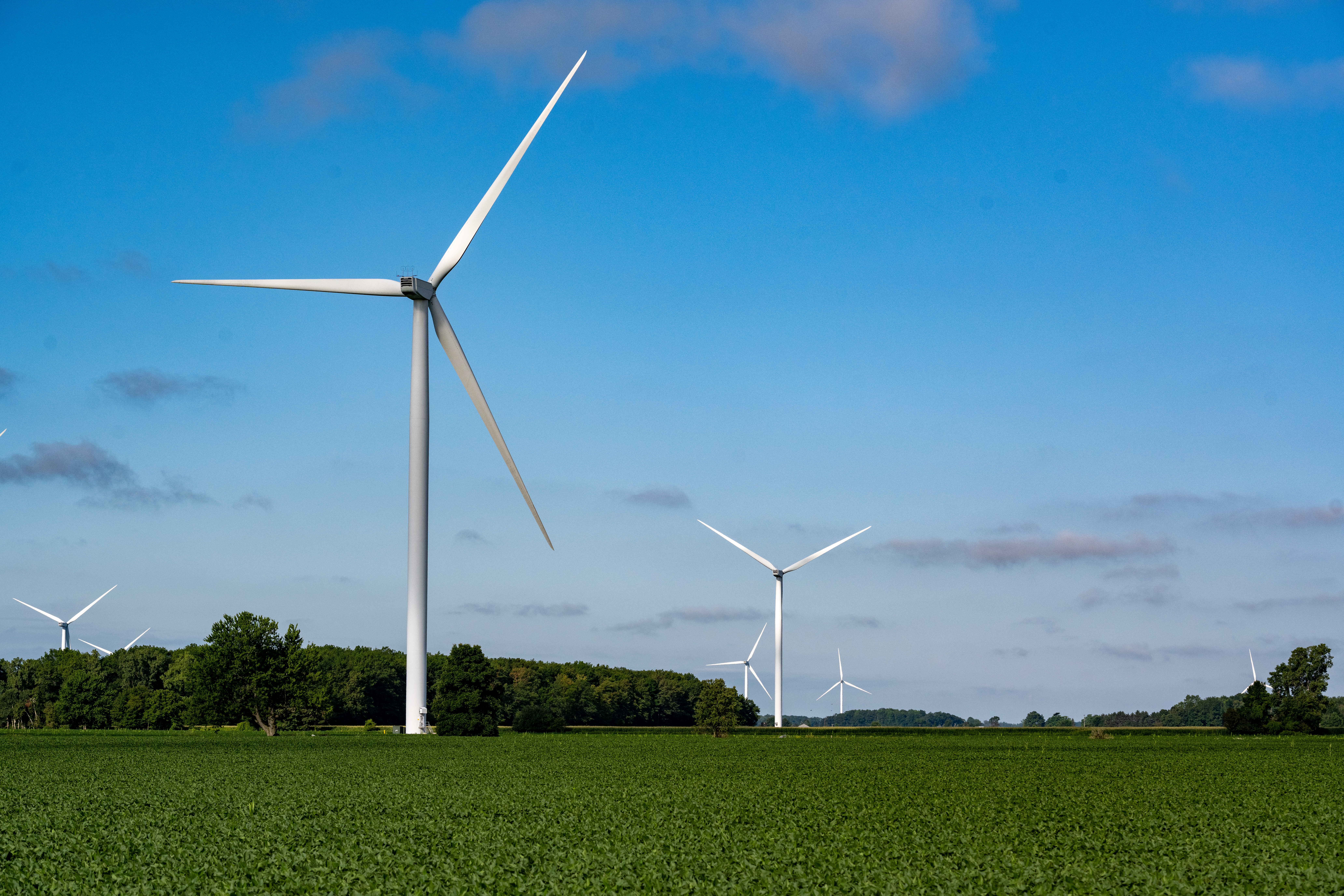DTE has a long history of environmental stewardship, and this is deeply embedded in its wind energy projects. To learn about all the ways the company works with wildlife at its wind parks, I talked with Amanda Ignatowski, a senior engineer in Environmental Management and Safety (EM&S), who developed and manages the Wind and Wildlife Program.
Before construction
When DTE begins development on a wind park, environmental constraints and issues are looked at before a site is even considered.
“Once we have a good idea that we’re going to move forward with the project, we begin a process requiring up to two years of ‘boots on the ground’ wildlife studies,” said Amanda.

DTE studies the surrounding environment to mitigate the impact on local wildlife, especially birds and bats
The preconstruction data gathered includes avian use studies, which estimate how the surrounding area is used by bird species to determine appropriate siting of the proposed wind park. This involves flying a helicopter within a 10-mile radius of the proposed project site to identify raptor and eagle nests in the area.
DTE also conducts bat habitat studies to see if there’s any suitable bat habitats on-site. A presence/absence survey – a monitoring technique used to determine whether a sensitive species is present at a site – is performed, during which bat maternity colonies are located.
During construction
After as much as two years of gathering wildlife data from the proposed project site, DTE is able to begin construction on the wind park.

Turbine components laid out before assembly at Meridian Wind
“We’re really focused on embedding environmental stewardship into our construction activities,” said Amanda. “This includes things like training the construction staff on environmentally-sensitive areas throughout the site, compliance requirements, and identifying sensitive species and their habitats.”
For the Meridian Wind project, which is expected to come online later this year, DTE used wildlife-safe materials that are 100% biodegradable and allow wildlife to move freely throughout the site. The company also hired an environmental compliance monitor who was regularly on-site during construction to ensure everything was done correctly and place signage in sensitive areas to make sure they were avoided.
Once a project is operational, DTE does a year of post-construction monitoring to understand the actual wildlife interactions at the project.
During operation
All DTE’s operational wind parks have bird and bat conservation strategies, which document all pre- and post-construction data. These include site-specific adaptive management plans, which address how the company will operate its projects to mitigate the impact to sensitive species such as bats, eagles and migratory birds.

Construction is now complete at Meridian Wind, which is expected to come online later this year
Additionally, all DTE operations and maintenance staff are trained annually in wind and wildlife work. This includes identifying species, what to do if they see a live eagle in the area, and how to report it.
“We also have a light management strategy, which seems minor, but is really effective,” said Amanda. “Our procedures ensure all lights are turned off at night to avoid attracting birds, especially at the wind park substations. Some of the things we do seem relatively simple, but it’s all part of a comprehensive strategy from the start and throughout the life of each project.”
DTE has also partnered with external organizations on research around technology-based advancements. The company has contributed to research on bat-deterrent technology as well as IdentiFlight, a bird detection system that works to protect wildlife while operating wind energy facilities. DTE will continue to support further research to protect the environment while building a cleaner future for all.
